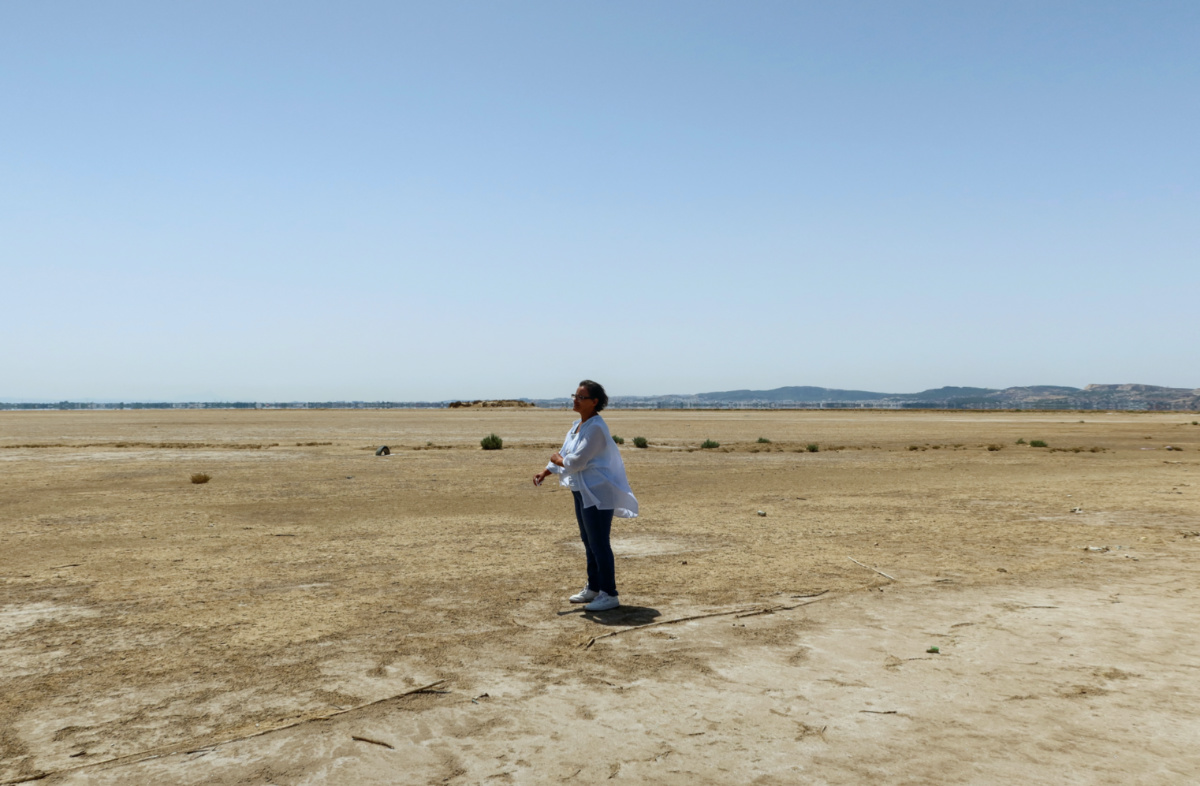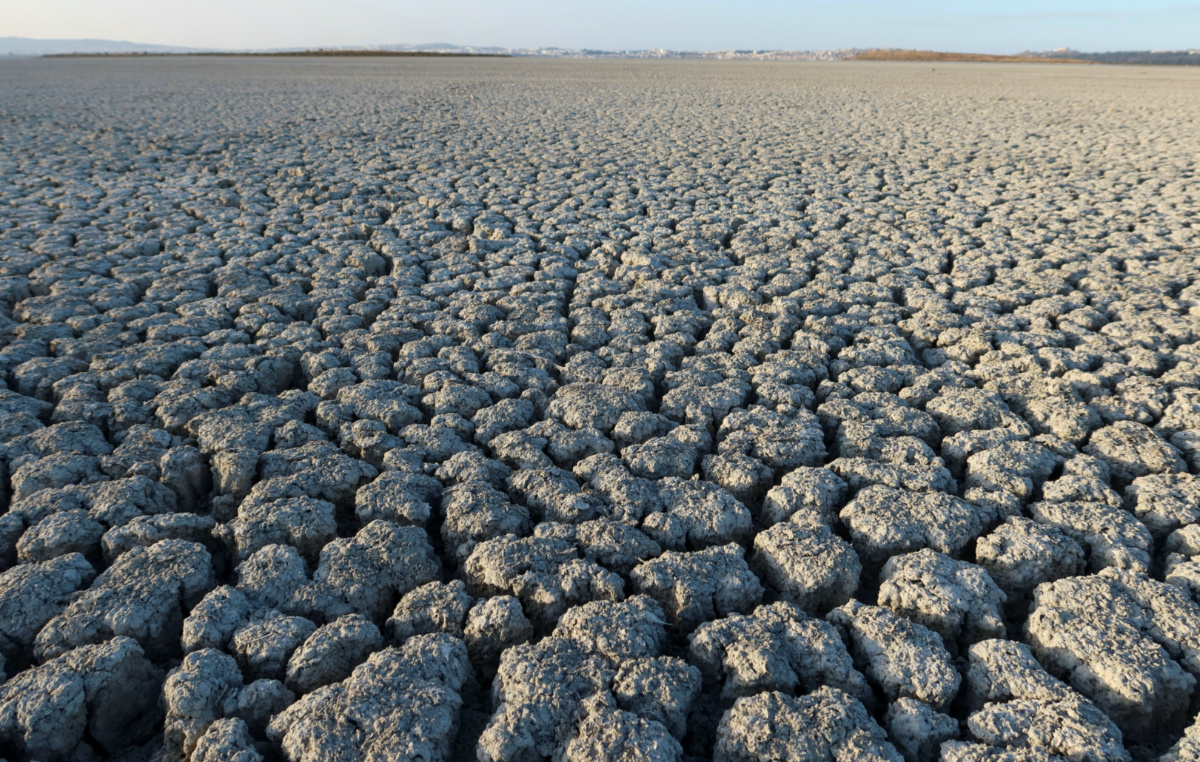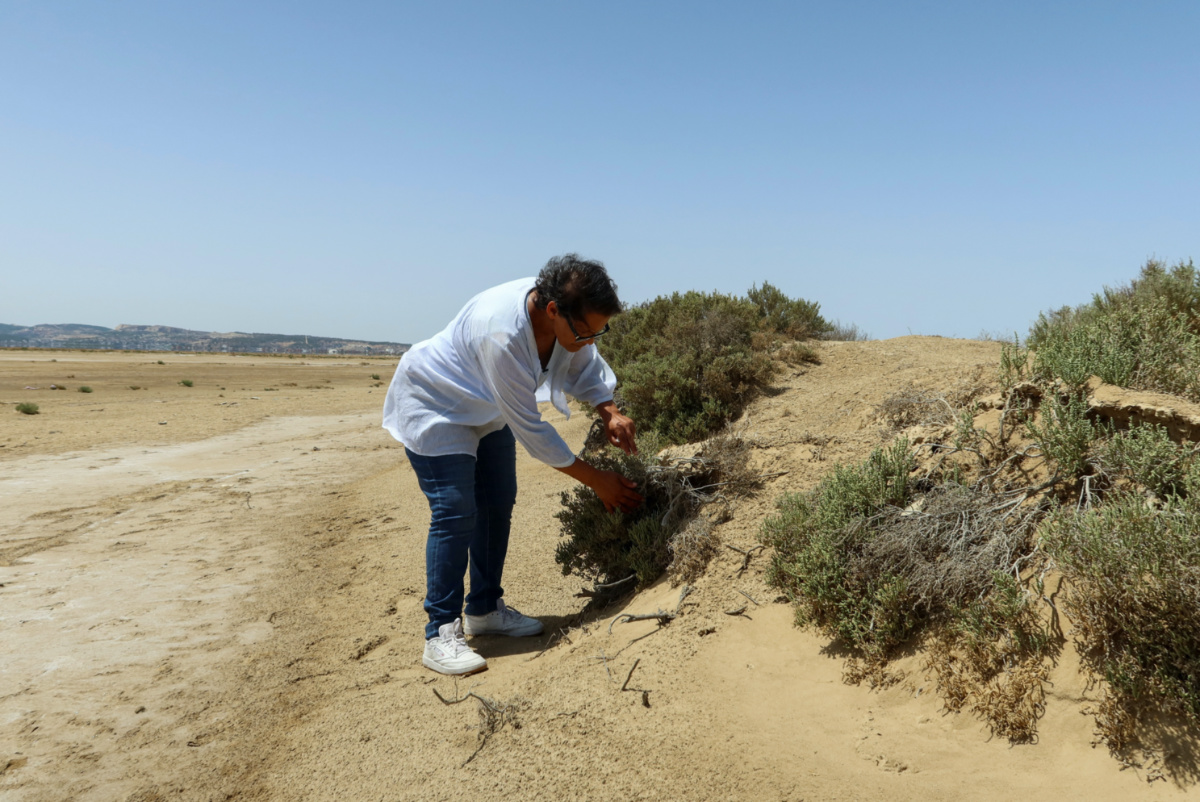
JIHED ABIDELLAOUI, of Reuters, reports from Tunis…
Tunis, Tunisia
Reuters
Tunisia’s lakes and coastal lagoons are parched and overheating, endangering a delicate ecosystem and disrupting the vast flocks of migrating birds that use the wetlands as a way station between Africa and Europe.
Ariana lagoon just outside the capital Tunis has been left a cracked expanse of dry mud, its small islands where birds usually nest now surrounded by sand and bereft of life after months of drought and a ferocious heatwave.

Tunisian environmental activist, Radhia Haddad, stands on the dried-out Ariana lagoon, in Ariana, Tunisia, on 11th August, 2023. PICTURE: Reuters/Jihed Abidellaoui
Even the nearby Sijoumi lagoon, where water has always been more reliable, is half empty, its flocks of flamingos casting a pale pink smear across a patch of wetland as Tunis suburbs rise on the hill behind.
“This year you can feel there is an environmental catastrophe due to drought.”
– environmental activist Radhia Haddad
“This year you can feel there is an environmental catastrophe due to drought,” said environmental activist Radhia Haddad, who has been visiting it since 2012. “It’s the first time I’ve seen Sijoumi lagoon dry out in this way.”
Jutting into the Mediterranean towards Sicily, Tunisia is on the main migration route for hundreds of bird species and its large wetlands are a haven for wading birds that journey north across the Sahara or south from the Arctic and northern Europe.
Last month, the temperature in Tunis topped 49 degrees Celsius on one scorching day, a sign of much hotter summers that in recent years have accompanied much drier winters as climate change hits North Africa.
Sijoumi and dozens of other big lagoons and inland lakes ring the Tunisian coast behind the long golden beaches where European tourists fly for the summer.

A view shows cracked ground at a dried-out part of the Sijoumi lagoon in Tunis, Tunisia, on 10th August, 2023. PICTURE: Reuters/Jihed Abidellaoui
Until a rare June rainstorm, Sijoumi had been mostly empty. The waders and other birds that nest amid the reeds, water and mud where wild boar forage by dawn risk losing their usual seasonal home.
“This year’s long drought has significantly impacted many environmental systems, particularly wetlands,” said Haddad, standing on cracked dry earth where birds usually lay their eggs on small islands in the lagoon. This year, there has been no nesting there at all, she said.
We rely on our readers to fund Sight's work - become a financial supporter today!
For more information, head to our Subscriber's page.
Hicham Azafzaf, the scientific coordinator of Tunisia’s Bird Lovers Association, said he had never seen such dry wetlands in his 20 years of monitoring them.
However, while this summer has been particularly bad, it follows a longer trend that had already had a clear impact on birds.
“There are several species that no longer come to Tunisia in the winter,” Azafzaf said. Some 30,000 greater white fronted geese used to winter at Ichkeul National Park west of Tunis each year, but this January only 400-600 came, he added.

Tunisian environmental activist, Radhia Haddad, searches for bird nests at the dried-out Ariana lagoon, in Ariana, Tunisia, on 11th August, 2023. PICTURE: Reuters/Jihed Abidellaoui
Climate change is not the only danger to Tunisia’s wetlands, he said. Cities and towns are growing closer to the edges of lagoons and rubble and waste are ever more often dumped in or near the water.
Yet the lagoons and other wetlands are important for human residents too, regulating local temperature during heatwaves and helping avert dangerous floods by absorbing rainfall from sudden storms.






